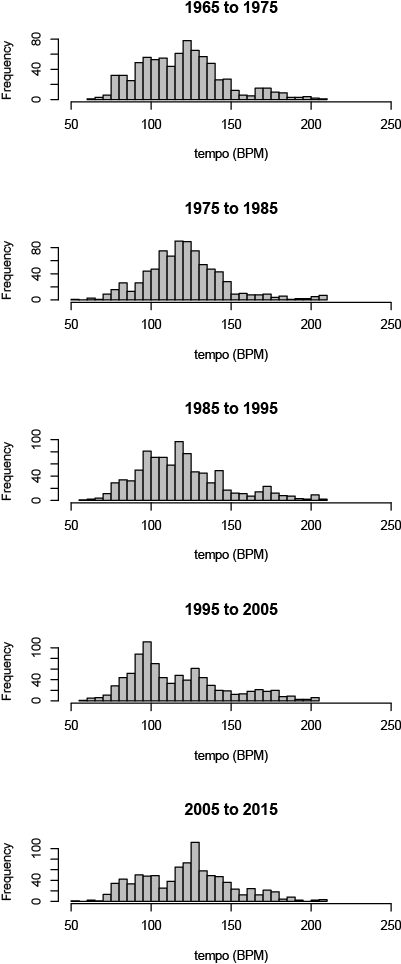Little boxes on the radio: Does modern pop music all sound just the same?
Though we definitely don’t see changes as dramatic as those in lyrical sentiment or WPM, there are some ways in which song tempo has evolved over time.


Visualizing BPM with histograms across each decade(left) makes a few of these trends clearer. Most prominently, there appear to be three relatively distinct clusters of tempos in modern songs: ~90 BPM, ~ 120 BPM, and ~170 BPM. This is somewhat different from songs pre-1995, which formed one large, relatively continuous distribution around 120 BPM. Other research suggests that most hip-hop songs are around 90 BPM, while 120–130 BPM is the most
Modern songs are more homogeneous (on some measures)
Finally, I took a look at other musical features to see whether the common complaint about pop music is true and songs really are more similar to one another now. I found three musical features that appear to corroborate this theory: song duration, musical sentiment, and energy.


Each of these three measures has shown a significant decrease in their variance over time, which roughly speaking means that modern songs are more similar to one another than they used to be (at least in terms of duration, sentiment, and energy). This increase in similarity can also be visualized by creating dendrograms of songs by decade, clustered according to musical features and cut at a distance of 500. Here, again, we see that there’s a greater degree of similarity (fewer groups in the tree) in modern music than in songs from the past.
